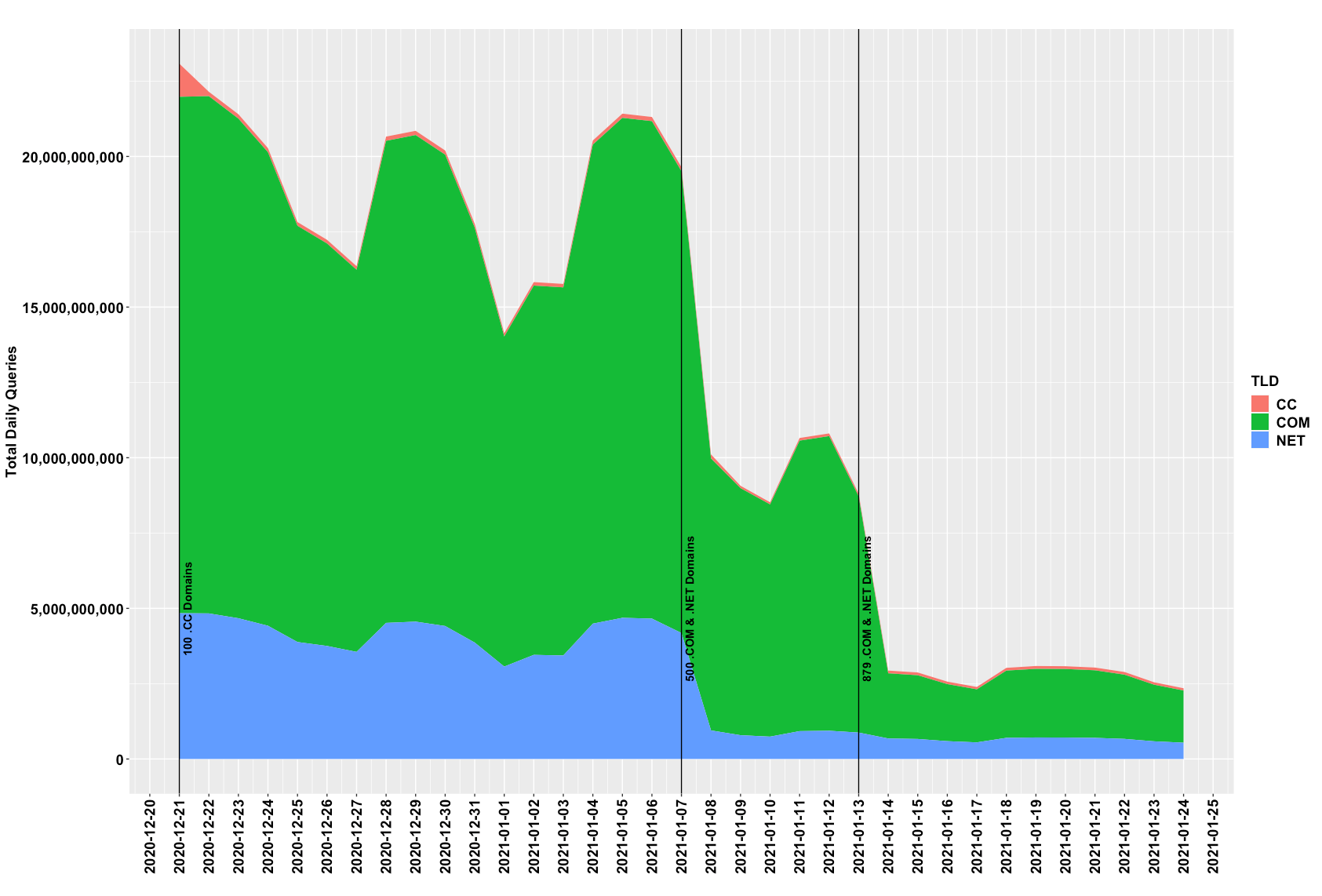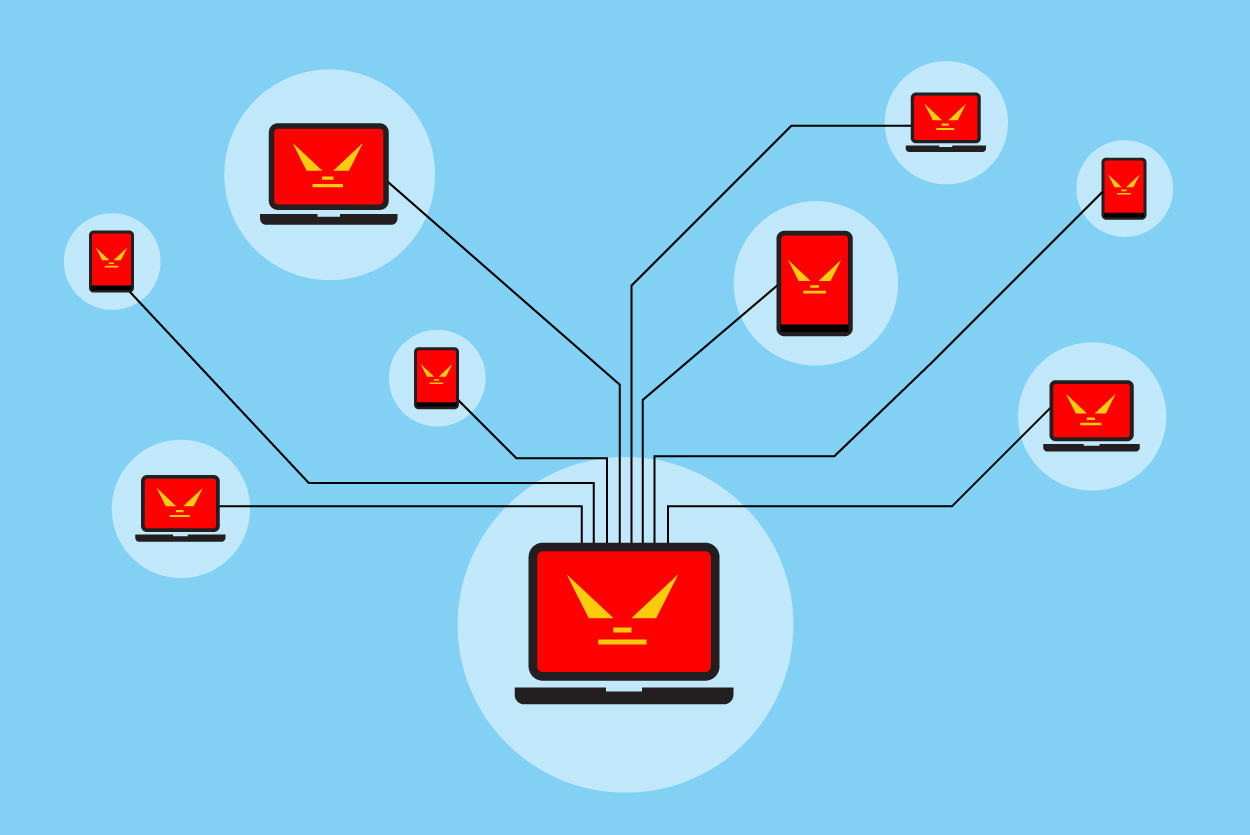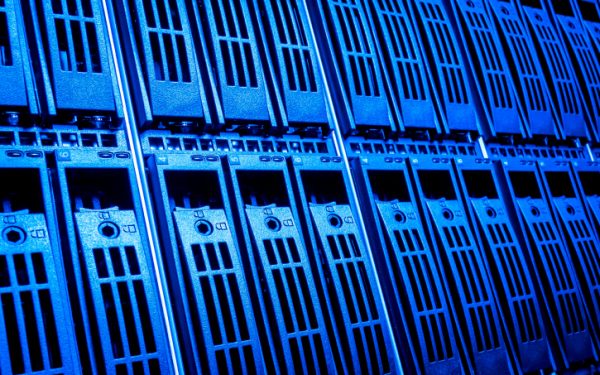Note: This article originally appeared in Verisign’s Q1 2021 Domain Name Industry Brief.
This article expands on observations of a botnet traffic group at various levels of the Domain Name System (DNS) hierarchy, presented at DNS-OARC 35.
Addressing DNS abuse and maintaining a healthy DNS ecosystem are important components of Verisign’s commitment to being a responsible steward of the internet. We continuously engage with the Internet Corporation for Assigned Names and Numbers (ICANN) and other industry partners to help ensure the secure, stable and resilient operation of the DNS.
Based on recent telemetry data from Verisign’s authoritative top-level domain (TLD) name servers, Verisign observed a widespread botnet responsible for a disproportionate amount of total global DNS queries – and, in coordination with several registrars, registries and ICANN, acted expeditiously to remediate it.
Just prior to Verisign taking action to remediate the botnet, upwards of 27.5 billion queries per day were being sent to Verisign’s authoritative TLD name servers, accounting for roughly 10% of Verisign’s total DNS traffic. That amount of query volume in most DNS environments would be considered a sustained distributed denial-of-service (DDoS) attack.
These queries were associated with a particular piece of malware that emerged in 2018, spreading throughout the internet to create a global botnet infrastructure. Botnets provide a substrate for malicious actors to theoretically perform all manner of malicious activity – executing DDoS attacks, exfiltrating data, sending spam, conducting phishing campaigns or even installing ransomware. This is the result of the malware’s ability to download and execute any other type of payload the malicious actor desires.
Malware authors often apply various forms of evasion techniques to protect their botnets from being detected and remediated. A Domain Generation Algorithm (DGA) is an example of such an evasion technique.
DGAs are seen in various families of malware that periodically generate a number of domain names, which can be used as rendezvous points for botnet command-and-control servers. By using a DGA to build the list of domain names, the malicious actor makes it more difficult for security practitioners to identify what domain names will be used and when. Only by exhaustively reverse-engineering a piece of malware can the definitive set of domain names be ascertained.
The choices made by miscreants to tailor malware DGAs directly influences the DGAs’ ability to evade detection. For instance, electing to use more TLDs and a large number of domain names in a given time period makes the malware’s operation more difficult to disrupt; however, this approach also increases the amount of network noise, making it easier to identify anomalous traffic patterns by security and network teams. Likewise, a DGA that uses a limited number of TLDs and domain names will generate significantly less network noise but is more fragile and susceptible to remediation.
Botnets that implement DGA algorithms or utilize domain names clearly represent an “abuse of the DNS,” opposed to other types of abuse that are executed “via the DNS,” such as phishing. This is an important distinction the DNS community should consider as it continues to refine the scope of DNS abuse and how remediation of the various abuses can be effectuated.
The remediation of domain names used by botnets as rendezvous points poses numerous operational challenges and insights. The set of domain names needs to be identified and investigated to determine their current registration status. Risk assessments must be evaluated on registered domain names to determine if additional actions should be performed, such as sending registrar notifications, issuing requests to transfer domain names, adding Extensible Provisioning Protocol (EPP) hold statuses, altering delegation records, etc. There are also timing and coordination elements that must be balanced with external entities, such as ICANN, law enforcement, Computer Emergency Readiness Teams (CERTs) and contracted parties, including registrars and registries. Other technical decisions also need to be considered, designed and deployed to achieve the desired remediation goal.
After coordinating with ICANN, and several registrars and registries, Verisign registered the remaining available botnet domain names and began a three-phase plan to sinkhole those domain names. Ultimately, this remediation effort would reduce the traffic sent to Verisign authoritative name servers and effectively eliminate the botnet’s ability to use command-and-control domain names within Verisign-operated TLDs.
Figure 1 below shows the amount of botnet traffic Verisign authoritative name servers received prior to intervention, and throughout the process of registering, delegating and sinkholing the botnet domain names.

Phase one was executed on Dec. 21, 2020, in which 100 .cc domain names were configured to resolve to Verisign-operated sinkhole servers. Subsequently, traffic at Verisign authoritative name servers quickly decreased. The second group of domain names contained 500 .com and .net domain names, which were sinkholed on Jan. 7, 2021. Again, traffic volume at Verisign authoritative name servers quickly decreased. The final group of 879 .com and .net domain names were sinkholed on Jan. 13, 2021. By the end of phase three, the cumulative DNS traffic reduction surpassed 25 billion queries per day. Verisign reserved approximately 10 percent of the botnet domain names to remain on serverHold as a placebo/control-group to better understand sinkholing effects as they relate to query volume at the child and parent zones. Verisign believes that sinkholing the remaining domain names would further reduce authoritative name server traffic by an additional one billion queries.
This botnet highlights the remarkable Pareto-like distribution of DNS query traffic, in which a few thousand domain names that span namespaces containing more than 165 million domain names, demand a vastly disproportionate amount of DNS resources.
What causes the amplification of DNS traffic volume for non-existent domain names to occur at the upper levels of the DNS hierarchy? Verisign is conducting a variety of measurements on the sinkholed botnet domain names to better understand the caching behavior of the resolver population. We are observing some interesting traffic changes at the TLD and root name servers when time to live (TTL) and response codes are altered at the sinkhole servers. Stay tuned.
In addition to remediating this botnet in late 2020 and into early 2021, Verisign extended its already four-year endeavor to combat the Avalanche botnet family. Since 2016, the Avalanche botnet had been significantly impacted due to actions taken by Verisign and an international consortium of law enforcement, academic and private organizations. However, many of the underlying Avalanche-compromised machines are still not remediated, and the threat from Avalanche could increase again if additional actions are not taken. To prevent this from happening, Verisign, in coordination with ICANN and other industry partners, is using a variety of tools to ensure Avalanche command-and-control domain names cannot be used in Verisign-operated TLDs.
Botnets are a persistent issue. And as long as they exist as a threat to the security, stability and resiliency of the DNS, cross-industry coordination and collaboration will continue to lie at the core of combating them.
This piece was co-authored by Matt Thomas and Duane Wessels, distinguished engineers at Verisign.



